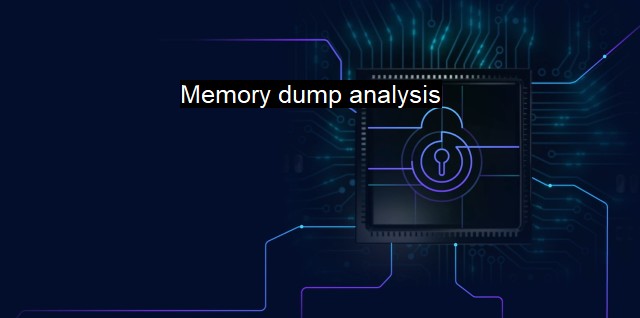What are Memory dump analysis?
Understanding Memory Dump Analysis: Enhancing Cybersecurity and Antivirus Solutions
Memory dump analysis is a component of cybersecurity with its roots embedded in forensics. It refers to the process of assessing the computer’s allocation of memory space, where specific programs and data are saved. A memory dump is an act of extracting internal data stored in a system’s memory for further analysis and debugging purposes. Incorporated into antivirus and cybersecurity protocols, memory dump analysis is key to identifying and solving many system issues including those related to cyber threats.A memory dump encompasses virtually all data stored within the active memory of a system at the time of an event, such as a system crash. This dump of information consists of codes, files, tokens, processes, commands or cryptographical keys active at the time the dump was generated. Mandated by the responsible individual or an automatic system response; memory dumps come in different types such as a complete memory dump which copies the entirety of the system RAM or smaller dumps which may only include the kernel memory relevant to the incident.
When security breaches occur, there's an immediate need to investigate the root cause and close vulnerabilities. Memory dump analysis espouses this requirement an aspect of digital forensics and malware analysis. Analyzing memory dumps avails the opportunity of tracing signs of infections, identifying anomaly activities, finding hidden processes and spotting malicious codes. This helps shed light on what happened during the security incident, expediting the process of closing vulnerabilities and aiding the eradication of offensive programs.
Beyond acting as a prescriptive measure after the fact, memory dump in cybersecurity and antivirus programs can help inform prediction of future behaviors. Identifying common signs can be used to establish patterns, informing robust algorithms which can recognize anomalies or threats ahead of their active engagement. In other words, potentially harmful activities can be identified and neutralized before causing damage.
Memory dump analysis features prominently in reverse-engineering malware. By combing through the minutiae of memory dumps, it allows cybersecurity experts to discover how the malware was injected and how it behaves. It offers privileged access inside the mind of the threat actor revealing their modus operandi. By doing so, experts can tailor-effective countermeasures against the specific traits of malware rather than adopting a generalized defense that might not work instances.
The process is typically carried out using specialized software or tools or, where necessary, the system's own integrated mechanics. These tools essentially take a snapshot of what’s happening in the memory at a particular point in time, visualizing this information for analysis. Unlike log analytics which rely on intentionally generated event records, a memory dump reveals the truth in active memory as it is, making it a powerful multi-purpose tool.
It's noteworthy to mention memory dumping isn't an entirely fool-proof method as memory lasts only as long as the system remains active. Contents of memory are lost once the system is shut down or restarted hence persistent threats can go undetected if the system is interrupted before a memory dump occurs.
So understanding and analyzing memory dumps can provide important insights about how malware operates, and further helps to detect signs of compromise. It potentially leads to early identification of malware or an advanced persistent threat (APT) by revealing their presence in the memory. as with any other approach, there could be limitations and therefore memory dump analysis is usually part of a larger cybersecurity strategy. the memory dump analysis is an indispensable instrument for the present and the future of system threat mitigation.

Memory dump analysis FAQs
What is memory dump analysis?
Memory dump analysis is the process of examining the data that has been stored in the memory of a computer when it crashes or experiences a system error. This process can help in identifying the root cause of the error and provide insights into potential cybersecurity threats.Why is memory dump analysis important in cybersecurity?
Memory dump analysis is important in cybersecurity because it can provide insights into the behavior of malicious software, such as viruses or malware, that may have caused a system error. This information can be used to develop and enhance antivirus software to detect and prevent future attacks.What tools are used for memory dump analysis?
There are several tools used for memory dump analysis, including WinDbg, OllyDbg, and IDA Pro. These tools allow for the examination of memory contents, stack traces, and system calls to identify the cause of system errors and potential security threats.What are some common memory dump analysis techniques?
Some common memory dump analysis techniques include examining the contents of the memory dump, looking for suspicious processes or modules, analyzing stack traces and system calls, and searching for patterns in the memory dump related to known security threats. These techniques can be used to identify the root cause of system errors and detect potential cybersecurity threats.| | A | | | B | | | C | | | D | | | E | | | F | | | G | | | H | | | I | | | J | | | K | | | L | | | M | |
| | N | | | O | | | P | | | Q | | | R | | | S | | | T | | | U | | | V | | | W | | | X | | | Y | | | Z | |
| | 1 | | | 2 | | | 3 | | | 4 | | | 7 | | | 8 | | |||||||